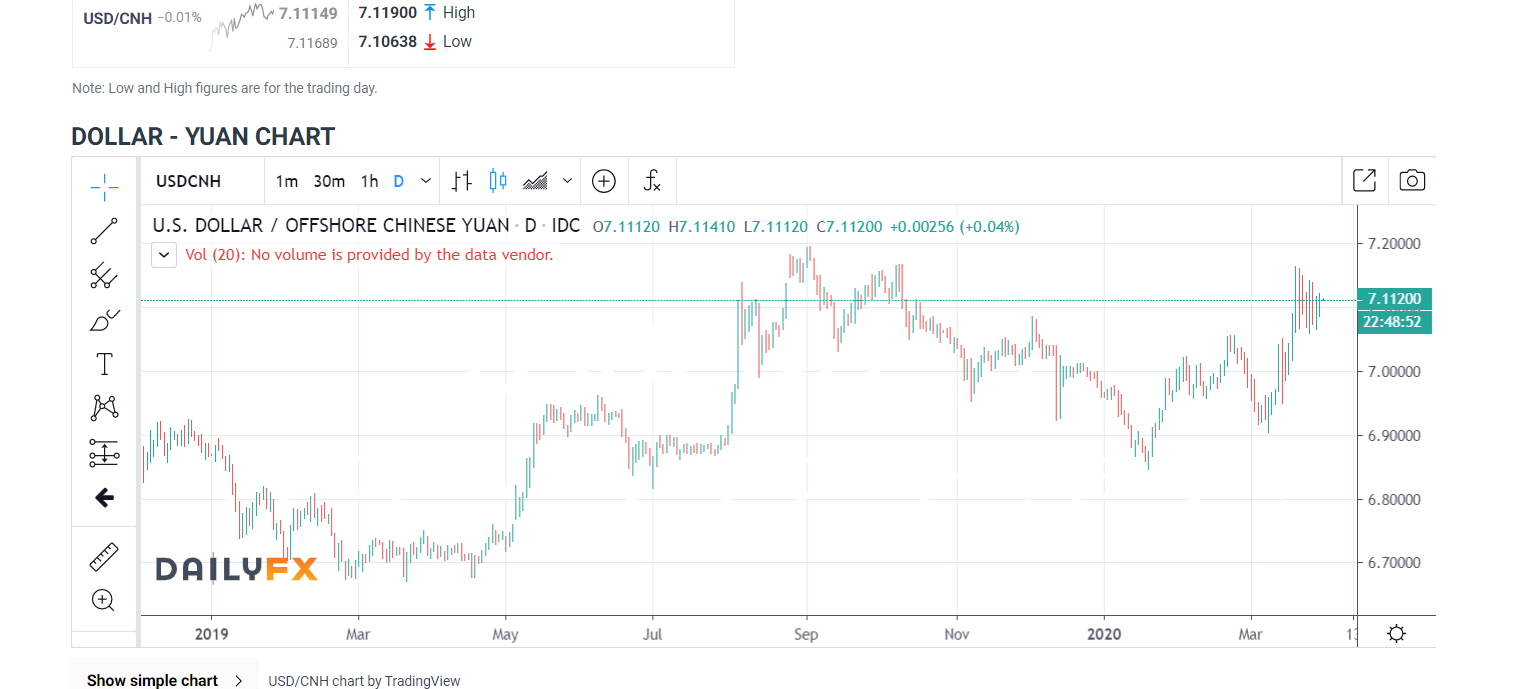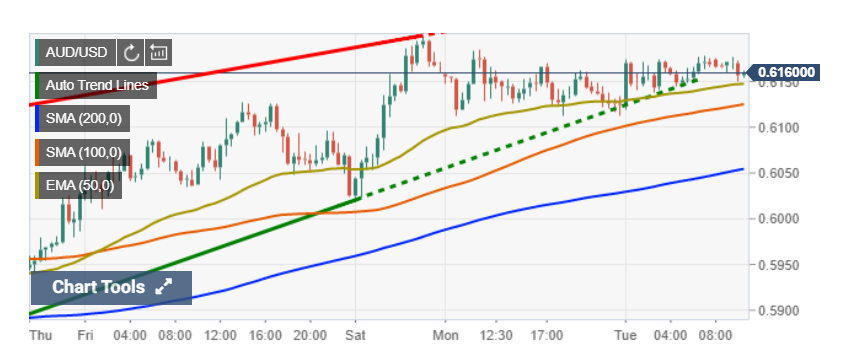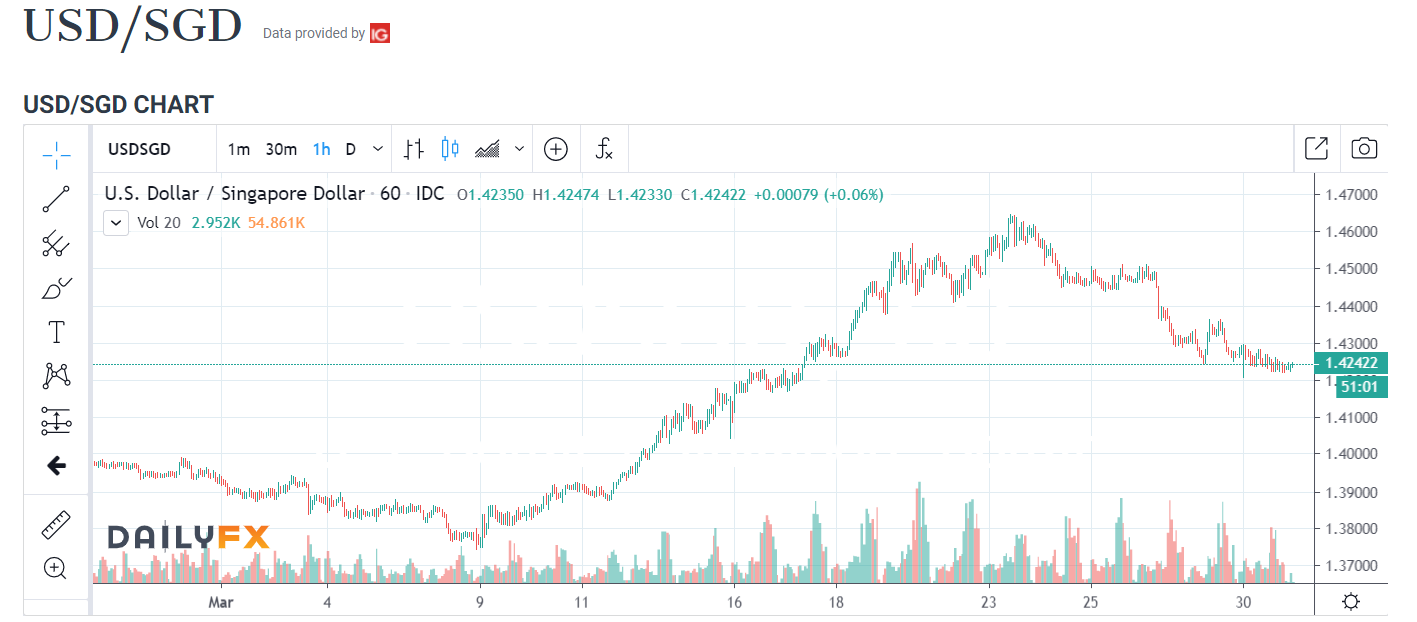Summary: The US Dollar, stocks and bond yields rebounded in cautious trade amid the coronavirus crisis and global easing policies. The Euro fell 0.81% to 1.1045 (1.1145) while Sterling retreated 0.35% to 1.2407 (1.2477). The Australian Dollar was little changed at 0.6170 from 0.6167 yesterday. The USD/CAD pair soared 1.25% to 1.4147 (1.4003) as Brent Crude Oil prices plunged to 18-year lows to USD 22.70 from USD 25.20. Growing fears that the coronavirus shutdown could last months and reduce demand for fuel weighed on oil prices. The safe-haven Yen was little changed against the US Dollar at 107.90 (107.97). Overnight, USD/JPY slumped to a low at 107.121, 2-week lows. Meantime the Dollar extended its rout of Emerging Market and Asian currencies after the Chinese and Singapore central banks cut interest rates. USD/CNH (Dollar/Offshore Chinese Yuan) climbed to 7.1120 from 7.0875 after the People’s Bank of China unexpectedly cut its interbank rate by 20 basis points. Singapore’s Monetary Authority (MAS) aggressively eased monetary policy by adjusting its currency band, which was expected. USD/SGD was a touch lower at 1.4242 (1.4275) in late New York trade. The Dollar advanced 1.04% against the Indonesian Rupiah (USD/IDR = 61,337.5), and 0.98% against the Indian Rupee (USD/INR = 75.59). Against the Thai Baht, the Greenback rose to 32.65 from 32.55. US equities rallied, lifted by gains in healthcare stocks. The Dow was 3.3% higher in late NY to 22,280. (21,850) while the S&P 500 advanced 3.4% to 2,625 (2,540). The key US 10-year bond yield climbed 3 basis points to 0.70%. In contrast, Germany’s 10-year Bund rate fell 2 basis points to -0.50%. Australia’s 10-year treasury yield dropped to 0.76% from 0.90%.
US Pending Home Sales rose 2.4% in February, beating forecasts of -1.8%, but lower than January’s 5.2%.

On the Lookout: With so many short-term factors seemingly affecting trade, caution prevailed in FX. The disconnect between the Dollar/majors and Dollar/Emerging Markets widened as Asian central banks joined their major counterparts and cut interest rates. Month and quarter-end adjustment factors also contributed to the cautious approach.
Today sees more primary economic data releases with China’s Manufacturing and Non-Manufacturing PMI’s for March taking the spotlight. Headline Manufacturing PMI is expected to recover to 44.9 from February’s 35.7 with Non-Manufacturing PMI climbing to 42.1 from 29.6.
Other data released today include Australia’s Private Sector Credit, Japanese Housing Starts, Unemployment Rate and Retail Sales, New Zealand’s ANZ Business Confidence Index for Asia.
European data sees Swiss Retail Sales, German Unemployment Change, German Flash Headline and Core CPI. The UK reports on its Current Account and Final GDP. US data released today are: Case Shiller 20-year House Price Index, Chicago PMI and Conference Board Consumer Confidence.
Trading Perspective: Expect the cautious approach to dominate FX today with traders focusing on the economic data releases. The coronavirus outbreak will still dominate with the various short-term influences in the background.
We focus on two Asian currency pairs (USD/THB and USD/SGD) in today’s commentary given their prominence in FX after the Chinese and Singapore central banks delivered interest rate cuts.
The latest Commitment of Traders/CFTC report saw net speculative USD shorts increase mainly as a result of a build in Euro, Sterling and Yen bets. We look at the individual breakdowns in tomorrows commentary.
AUD/USD – Nears Upper End Range at 0.6200, Awaiting China PMI
The Australian Dollar finished little-changed in relatively subdued trade at .6169 from 0.6167 yesterday. AUD/USD slipped to an overnight low at 0.6111 before bouncing back to yesterday’s opening level. Overnight high was 0.61842. Despite the higher USD against majors and Asian Emerging market currencies, the Aussie Battler stayed buoyant, awaiting expected improvements in China’s PMI’s for March.

AUD/USD has immediate resistance at 0.6200-20 area followed by 0.6260 and 0.6330. Immediate support can be found at 0.6110 and 0.6070. Traders will focus on the release of China’s official PMI numbers for March. Manufacturing PMI’s are expected to climb to 45 from February’s 29.6. Non-manufacturing PMI is forecast to rise to between 38 and 42 in March from the previous month’s 29.6. The Aussie stayed bid in anticipation of a contraction in this set of reports.
Watch China’s Manufacturing PMI. A rise of 45-50 will see the Aussie break above 0.62 cents to 0.6250. Anything lower than 40 could see us back to the 0.6050-0.6200 range. Let’s not forget that the weaker Asian and EM currencies will be a barrier to any sustained AUD/USD gains.
USD/THB – Lagging Behind USD/EMS – Topside Rally Due
The US Dollar rallied against the Thai Baht to 32.65 from 32.55 yesterday in subdued trade. The Dollar’s climb against the Thai Baht was mild compared to its rise against the other Asian and EMS currencies. The USD/IDR pair (Dollar Indonesian Rupiah) was up 1.04% to 61,337.5 in contrast. USD/ZAR (USD – South African Rand) skyrocketed 1.7% after Moody’s cut South Africa’s credit rating.
The coronavirus outbreak has also taken its toll in Thailand with 1,524 confirmed cases, and 2 more deaths as numbers soared according to the Bangkok Post yesterday. More people have rushed to flee the capital Bangkok in the wake of a partial lockdown. These factors should see the USD/THB pair play catch up with the rest of the USD Asian and Emerging Market currencies.
The Bank of Thailand will continue to monitor the currency. USD/THB slumped to a 2020 low at 29.657 in January. The BOT quickly intervened to push the USD/THB higher to 30.20. While the USD/THB is near November 2018 highs (33.15), it is still far below the January 2016 peak at 36.40.
Look for a slow grind higher with a likely range today of 32.55-32.85. As the Covid-19 spread hits more densely populated Asian and EM countries, the USD/THB should hit fresh 2009 highs.
USD/SGD – Dips on Expected MAS Easing, Grind Higher Follows
The Monetary Authority of Singapore (Singapore’s central bank) eased its interest rate policy yesterday as the country braced for a recession. By setting the Singapore Dollar’s rate of appreciation at zero percent at the prevailing lower level of its exchange rate policy, the MAS effectively eased. The MAS uses the Singapore Dollar’s nominal effective exchange rate (S$NEER) as its main policy tool as opposed to interest rates. Singapore is a small country and the economy is open with a heavy dependence on trade. The move was widely expected.

While the MAS move was widely expected, it was the first-time that Singapore central bank lowered the band’s centre since 2009 during the global financial crisis. The Singapore Dollar had been appreciating too much too quickly against other Asian and EM currencies much to the dismay of the authorities.
USD/SGD hit a high at 1.4646 a week ago before dropping to 1.4275 yesterday when the announcement was made. USD/SGD initially plunged to 1.4178 from 1.4275 before rebounding to settle at 1.4235 in late New York. Immediate support lies at 1.4200 followed by 1.4170. Immediate resistance can be found at 1.4280 followed by 1.4330. Look for the USD/SGD to grind higher with a likely range today of 1.4225-1.4325.












